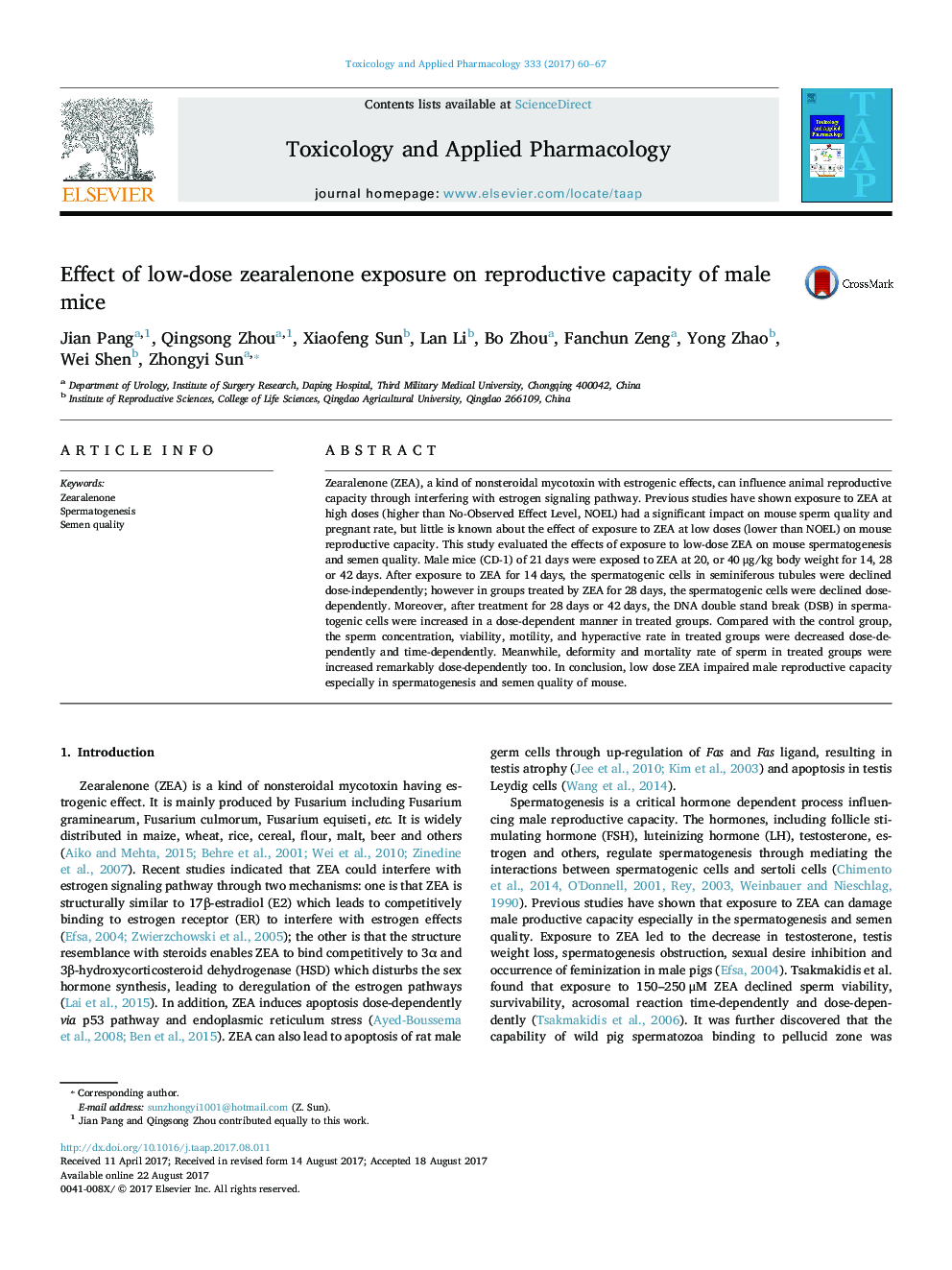| Article ID | Journal | Published Year | Pages | File Type |
|---|---|---|---|---|
| 5558230 | Toxicology and Applied Pharmacology | 2017 | 8 Pages |
â¢Exposure of low dose Zearalenone decrease sperm concentration, viability, motility, and hyperactive rate of male mice.â¢Exposure of low dose Zearalenone impairs spermatogenesis.â¢Exposure of low dose Zearalenone leads to DSBs incidence increase in mouse germ cells.
Zearalenone (ZEA), a kind of nonsteroidal mycotoxin with estrogenic effects, can influence animal reproductive capacity through interfering with estrogen signaling pathway. Previous studies have shown exposure to ZEA at high doses (higher than No-Observed Effect Level, NOEL) had a significant impact on mouse sperm quality and pregnant rate, but little is known about the effect of exposure to ZEA at low doses (lower than NOEL) on mouse reproductive capacity. This study evaluated the effects of exposure to low-dose ZEA on mouse spermatogenesis and semen quality. Male mice (CD-1) of 21 days were exposed to ZEA at 20, or 40 μg/kg body weight for 14, 28 or 42 days. After exposure to ZEA for 14 days, the spermatogenic cells in seminiferous tubules were declined dose-independently; however in groups treated by ZEA for 28 days, the spermatogenic cells were declined dose-dependently. Moreover, after treatment for 28 days or 42 days, the DNA double stand break (DSB) in spermatogenic cells were increased in a dose-dependent manner in treated groups. Compared with the control group, the sperm concentration, viability, motility, and hyperactive rate in treated groups were decreased dose-dependently and time-dependently. Meanwhile, deformity and mortality rate of sperm in treated groups were increased remarkably dose-dependently too. In conclusion, low dose ZEA impaired male reproductive capacity especially in spermatogenesis and semen quality of mouse.
Graphical abstractDownload high-res image (101KB)Download full-size image
